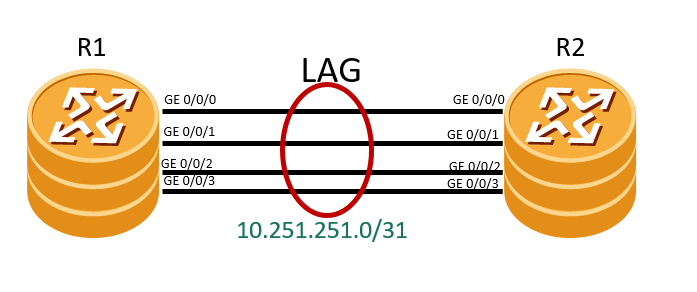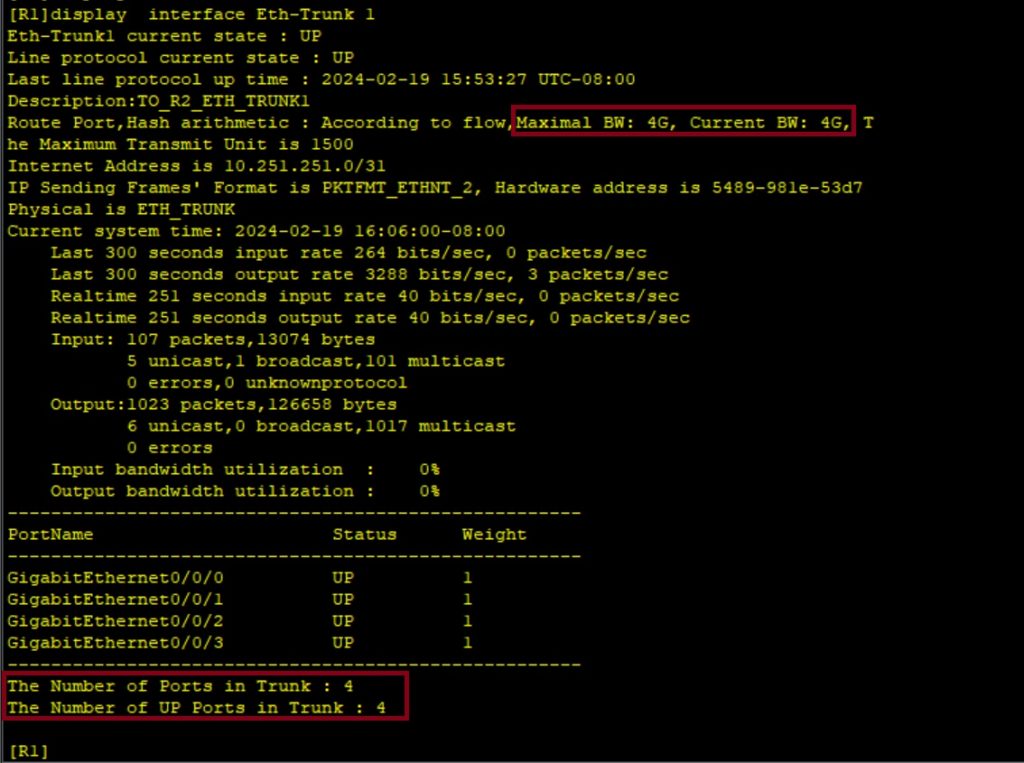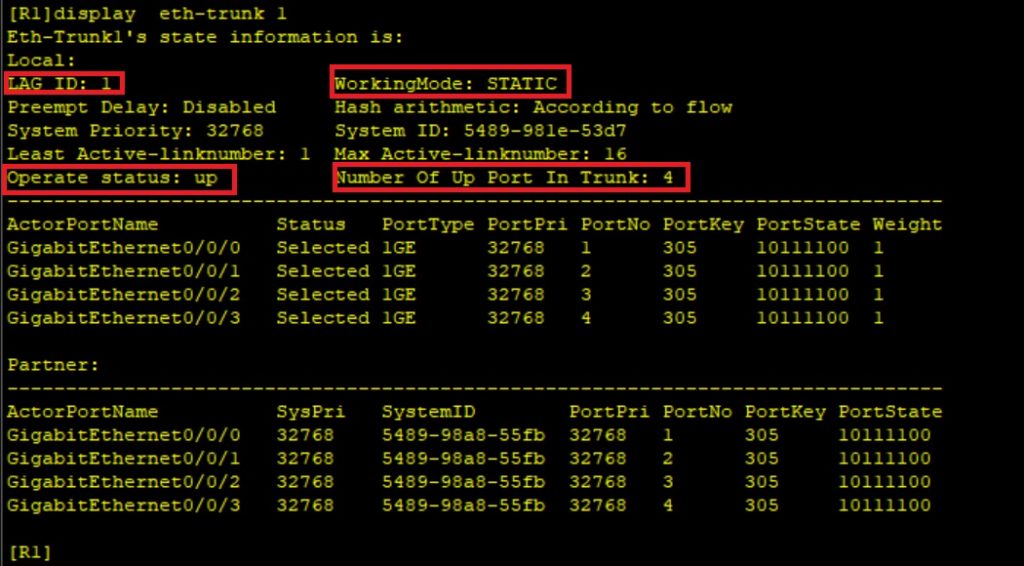Implementing Link Aggregation on Huawei routers.
- February 19, 2024
- Posted by: Lyfey Technologies
- Categories: Huawei, Networking

What is Link Aggregation?
Link aggregation is a common networking technique of bundling multiple physical links to a logical link to increase link bandwidth. Link aggregation provides link backup mechanisms, greatly improving link reliability. The aggregated link is referred to as an Eth-trunk in Huawei terminologies.
The interfaces that constitute an Eth-Trunk are referred to as member interfaces. The link corresponding to a member interface is a member link. Member interfaces can be classified into active interfaces, which forward data, and inactive interfaces, which do not forward data, they are backup links in a LAG (Link Aggregation Group). Link Aggregation can operate in two modes Manual and Link Aggregation Control Protocol (LACP)
Benefits of Link aggregation
- Increased bandwidth: The total bandwidth of the link aggregation interface is the sum of the bandwidth of member interfaces. If you bundle 4 10G links together, you have a 40G link.
- Higher reliability: When the physical link of a member interface fails, the traffic on the member link is switched to another member link, ensuring uninterrupted service on the trunk link.
- Load balancing: The traffic is load-balanced among active member interfaces of the LAG.
Lab Setup.

Step 1: Configure LAGs on the two routers
****************************************R1
interface Eth-Trunk1
description TO_R2_ETH_TRUNK1
ip address 10.251.251.0 255.255.255.254
mode lacp-static
commit
#****************************************R2
interface Eth-Trunk1
description TO_R1_ETH_TRUNK1
ip address 10.251.251.1 255.255.255.254
mode lacp-static
commit
#Step 2: Configure physical interfaces and add them to the LAG.
In production network where routers with multiple line cards are deployed, its a good practice to distribute ports in a lag to different line cards so that a failure of one line card will not have impact on the LAG. The other ports on other line cards will continue to carry traffic avoiding down time.
*************************************R1
interface GigabitEthernet0/0/0
description TO_R2_GE0/0/0
eth-trunk 1
#
interface GigabitEthernet0/0/1
description TO_R2_GE0/0/1
eth-trunk 1
#
interface GigabitEthernet0/0/2
description TO_R2_GE0/0/2
eth-trunk 1
#
interface GigabitEthernet0/0/3
description TO_R2_GE0/0/3
eth-trunk 1
#
commitinterface Eth-Trunk1
description TO_R1_ETH_TRUNK1
ip address 10.251.251.1 255.255.255.254
mode lacp-static
commit
#
*********************************R2
interface GigabitEthernet0/0/0
description TO_R1_GE0/0/0
eth-trunk 1
#
interface GigabitEthernet0/0/1
description TO_R1_GE0/0/1
eth-trunk 1
#
interface GigabitEthernet0/0/2
description TO_R1_GE0/0/2
eth-trunk 1
commit
#
interface GigabitEthernet0/0/3
description TO_R1_GE0/0/3
eth-trunk 1
commit
#Verification:


Please note, that this is just a simple configuration of a LAG. You may be required to configure other parameters like interface priorities, minimum or maximum number of links that should be up in an eth-trunk, preemption, load balancing parameters, etc.
Latest Posts
- Step by step guide on how to implement different networking protocols on Juniper MX routers
- L2 EVPN Implementation on Huawei Routers.
- VRRP Monitoring of the Uplink Interface status on Huawei routers.
- Association between VRRP and BFD Implementation on Huawei routers.
- Association between VRRP and STP Implementation on Huawei routers.
Leave a Reply
You must be logged in to post a comment.
